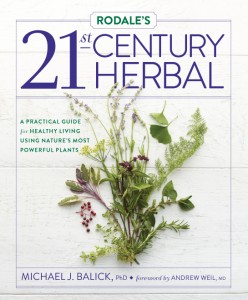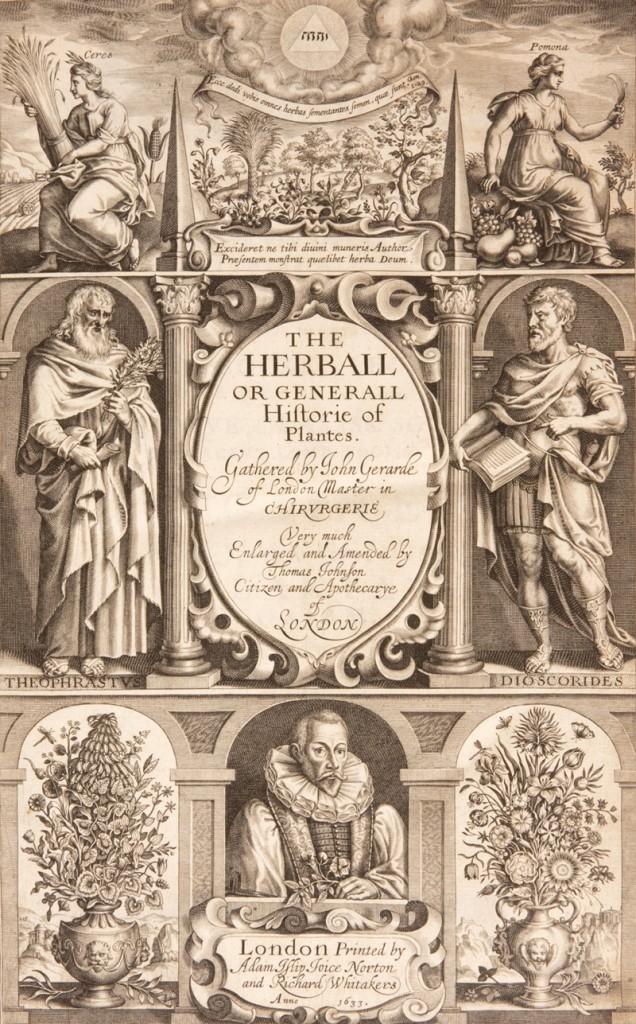A 21st Century Guide to Nature’s Most Powerful Plants
Posted in Book on June 3, 2014 by Michael Balick
Michael J. Balick, Ph.D., is Vice President for Botanical Science at The New York Botanical Garden and Director and Philecology Curator of the Botanical Garden’s Institute of Economic Botany. For more than 30 years, he has studied the relationship between plants and people, working with traditional cultures in tropical, subtropical, and desert environments around the world.
 All of the scientists at The New York Botanical Garden have stories to tell about our work, our travels, and the people we meet along the way. I’ve had the opportunity to tell some of my stories and provide lessons about the importance of nature and botanical research in a new book, Rodale’s 21st Century Herbal: A Practical Guide for Healthy Living Using Nature’s Most Powerful Plants.
All of the scientists at The New York Botanical Garden have stories to tell about our work, our travels, and the people we meet along the way. I’ve had the opportunity to tell some of my stories and provide lessons about the importance of nature and botanical research in a new book, Rodale’s 21st Century Herbal: A Practical Guide for Healthy Living Using Nature’s Most Powerful Plants.
Rodale’s 21st Century Herbal, from the publisher of Organic Gardening and many other health and wellness magazines, is written from the perspective of ethnobotany, the study of the relationship between plants and people.
My goal was to tell the story of how plants have been used as medicines, foods, spices, dyes, cosmetics, and other things from our earliest days as a species to the present day, with the current explosion of interest in gardening, herbal medicine, and different dietary patterns.
In addition to practical information, I’ve included short vignettes about my own field work around the world and addressed some common questions about plants and botany. For example, herb gardeners often ask me why the scientific names of plants sometimes change. They are familiar with the scientific name of the plant they have been growing for years, but suddenly it has a new name. The answer is simple. As we learn more about how plants have evolved, particularly through the use of tools that look at the species’ DNA, botanists develop a more natural, logical and workable system of classification. Why does this matter? The closer scientists get to an understanding of how plants are related, the greater the ability of those who work on applied aspects of plant biology—including plant breeders, medicinal chemists, biofuel scientists, conservationists and others—to help feed, clothe, heal, fuel, and protect a growing world population and our environment.

Credit: The LuEsther T. Mertz Library/The New York Botanical Garden
Working on this book was a fascinating and educational experience. It is modeled after The Herball, Or Generall Historie of Plantes, written by John Gerard and first published in 1597. His was a remarkable book, a medical self-help reference that physicians and families could turn to for healing wisdom, using herbs. I’ve tried to do something similar, while bringing in up-to-date medical, horticultural, botanical, chemical, culinary, craft, and gardening information. The book also includes an extraordinary collection of color photos of more than 180 herbs, taken by my friend Steven Foster, the noted herbalist and very talented plant photographer.
Rodale’s 21st Century Herbal gave me the chance not only to offer readers some of what I’ve learned about plants during my career but also to revisit the place where that career started. As part of the celebration of the book’s publication, I recently gave a talk at the University of Delaware on the Garden’s basic and applied research programs, with a focus on my research on the traditional use of plants as medicine. The venue was quite poignant for me. It was the same room where I gave my first professional talk, on the harvesting and preparation of common garden herbs, as a freshman at the university in 1970, at the invitation of my undergraduate advisor, Dr. Richard W. Lighty. Forty-four years later, he was in the audience, still as engaged and active as ever.
My thanks to the many friends and colleagues who contributed to Rodale’s 21st Century Herbal, which is available at Shop in the Garden here, as well as in bookstores and other online retailers.

